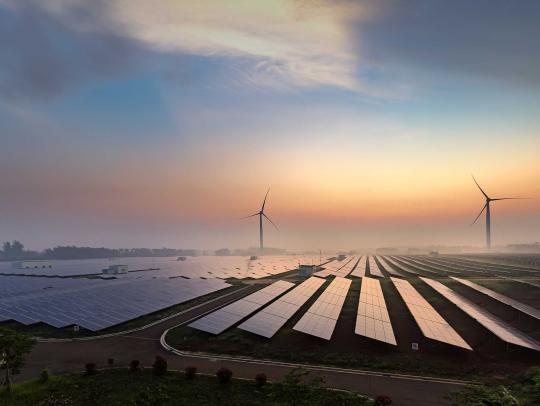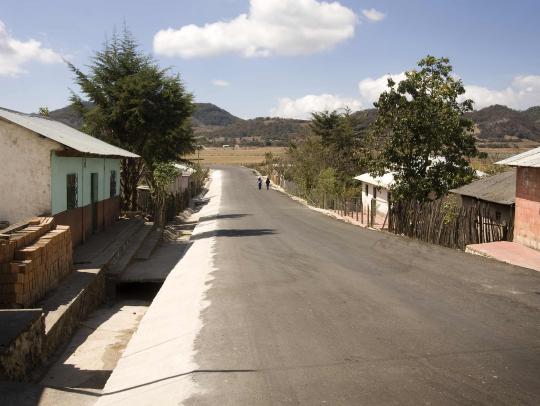Convergence is key to unleashing Africa’s potential

First published in Connect-World: World Africa & the Middle East (2018), copyright InfoComms Media Ltd
Network communications in Africa have boomed: the continent has clocked considerable numbers in recent years in Internet penetration, international bandwidth and growth in its terrestrial backbone. Previously, earlier connectivity was much like the spots on a leopard; small patches of coverage for the unconnected making up the vast majority in the background. But in just five years from 2009 to 2014, these connectivity spots changed, according to the Internet Society’s Internet Development and Internet Governance in Africa report. International bandwidth grew 20 fold, Internet penetration climbed a staggering 400 per cent and the terrestrial backbone doubled, these are some of the impressive numbers on communications growth that we heard at last year’s African Internet Summit in Nairobi.
Fed by considerable private and public investment, this network communications growth appears to be something of a phenomena. The International Telecommunications Union (ITU) had forecast Internet penetration to reach 21.8 per cent by the end of 2017, a massive spike compared to just 6.7 per cent in 2010. And a 2018 annual report released by global digital agencies We Are Social and Hootsuite, revealed that the number of Internet users across the continent grew by more than 20 per cent compared to 2017. But just what do these numbers really mean within the African context? Where are we in terms of connecting Africa?
While Internet in Africa is rapidly growing and the continent is furnishing significant figures, harsh disparities remain. Not all countries are enjoying swelling penetration rates. In fact, at the low end of the spectrum, some have penetration rates of less than two per cent, and most countries are below the threshold needed to yield the socio-economic benefits of broadband access. While the network communications boom and the potential it yields are both positive, Africa still has a far way to go to bring Internet access to the masses of people across all the continent’s countries. Failing to curb the access disparities will mean that while some communities are brought online and move towards reaping the socio-economic benefits that go with Internet access, others will be left behind. The digital divide within Africa itself will widen.
How do we solve this? First thoughts may likely go to the deployment of more networks. Africa needs greater connectivity, therefore, take what the continent has and increase it – this notion may seem like a no-brainer. But while there is an urgent need for mass network and infrastructure deployment, we have to consider these networks and why Africa is facing such severe connectivity challenges in the first place. We have to address the steady grip of the significant challenges that are choking existing networks in order to change the status quo. Some of these network challenges include:
- Affordability
- Cellular-only networks, with lagging longer-term Fibre-to-the-Home (FTTH)investment
- Network reliability and subsequent outages
- Limited fibre-related knowhow needed to deal with the complexities of fibre networks
- Network quality
- Reach, where networks do not extend to underserved and unserved areas due to an issue of cost effectiveness where potential subscribers don’t tip the associated costs, or infrastructure being in a state of disrepair
Socio-economic growth and humanitarian efforts
In order to overcome these network trials and tribulations, we need to deploy evolved networks to support emerging technologies, applications and services. Conventional networks that typically comprise of one technology, and fail to deliver communications demands must be replaced with a multiple infrastructure solution comprising the convergence of terrestrial fibre, wireless and satellite technologies. Only this will change the status quo to bring the unconnected communities online, while also addressing the network limitations.
Such a convergence of technologies will not only help combat Africa’s network challenges, but will tackle the digital divide for a better, more sustainable world. With improved connectivity and greater access, businesses across all sectors can benefit from increased productivity and efficiency, while, at the same time, gain access to a global marketplace of billions of people and millions of companies. The challenge of healthcare access for rural areas that are lacking medical facilities and trained healthcare practitioners can be alleviated. Similarly, e-learning can change lives whereby quality education can be delivered to even the most remote locations.
Overcoming its network challenges will unleash Africa’s potential, and install the long-term health and stability of digital economies. It will offer the socio-economic benefits of the connected society and also support other humanitarian efforts. A communications network of converged technologies and infrastructures is also an ideal enabler of resilient, secure and fast-to-deploy critical communications during emergency situations, natural disasters, and search and rescue missions. It is here that the convergence of communications technologies can mitigate mass damage and casualties, and save lives.
Intelligent application
Another challenge remains, but this time it’s within the solution of convergence itself. With multiple infrastructures at play, it’s important to have the right tool for the application. However, this is just one side of the coin, identifying the required infrastructure is meaningless if the technologies don’t work seamlessly together. Therefore, standardisation and harmonisation are paramount. Getting this right, by using software intelligence equipment, network operators, particular Mobile Network Operators (MNO), will be enabled to take full advantage of services currently in huge demand, such as voice, m-banking,e-commerce, e-government, video content and advertising. Such equipment as a software-defined, automated, cloud-scale platform would help MNOs in Africa provide services in demand and grow business. It would enable SD-WAN, analytics, security, AR/VR, VNF, the connected car and, arguably the biggest growth trend, the Internet of Things (IoT).
Software intelligence equipment is needed to fully exploit the new communication and information technologies that have emerged. In addition to IoT, there is 5G technology fast approaching, which will usher in a multitude of opportunities as well as challenges that need to be overcome in order to reap these prospects. At the same time, these novel communication and information technologies will encourage further integration of different communication systems, requiring even greater interoperability at an exponential rate. Investing in a software-defined, automated, cloud-scale platform that helps MNOs choose the right infrastructure and navigate the best way to deliver services is crucial. However, we also need to see greater cross-industry collaboration in order to spur the deployment of converged technologies. From terrestrial fibre and wireless to satellite, together, these technologies beautifully fill the network communications gaps. Their intelligent and seamless convergence is the enabler of improved, ubiquitous connectivity, 5G and comprehensive IoT. We must work together to ensure that something as promising as IoT not be a convenience for the connected “elite”, but an enabler for emerging nations to boost industry productivity and economic growth.




